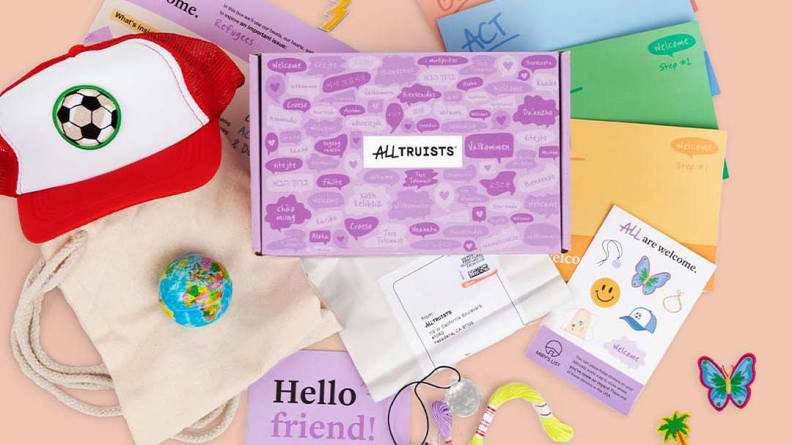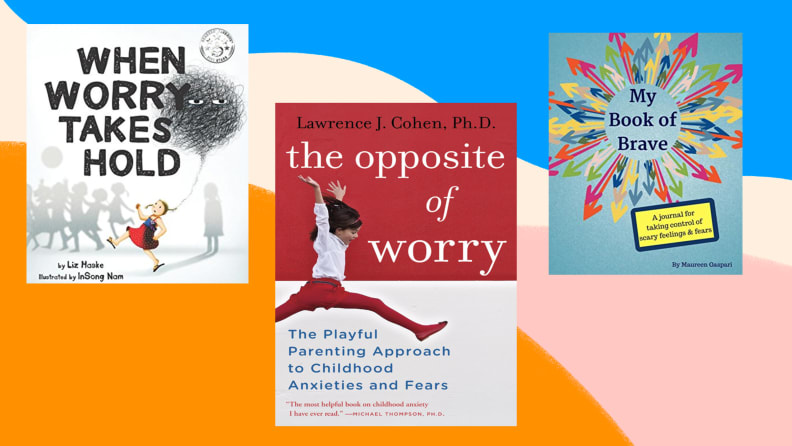 — Recommendations are independently chosen by Reviewed’s editors. Purchases you make through our links may earn us a commission.
— Recommendations are independently chosen by Reviewed’s editors. Purchases you make through our links may earn us a commission.Sometimes the world can be a scary place. It may have been easy enough to quell some of your child's fears when they were younger—cue the monster spray—but as children learn and grow, fears can become more complex. Concerns may only intensify after catching part of a news story, hearing information from friends, or even taking part in a family discussion around the table.
Janet Gleichman, a clinical social worker with more than three decades of experience in working with children and families, advises facing fears head on.
“The best place that a child can seek answers around specific fears is at home, with the family,” says Gleichman. “This gives the family the opportunity to guide the conversation and provide true facts rather than relying on gossip and hearsay. Not only can this be misleading, but it may also serve to only elevate fears.”
There's no one “right way” to support your child. Approaches may differ based on specific situations, the child's age and cognitive ability, and family values and norms. However, we can depend on a few expert-approved guidelines in helping our children to manage fears when faced with situations that can seem frightening or overwhelming.
1. Talk it out

Especially when dealing with younger children, asking targeted questions can help get to the bottom of their worries.
Kids may understand that they are scared, but they may not always have the words, or feel confident in verbalizing their fears. “Speaking the words out loud may take some of the power out of the situation.” suggests Gleichman. “It can also serve as a means of processing a scary event.”
It may be helpful to ask targeted questions around fears. Specific queries such as, “Why is this scary to you?”, “What do you think may happen?”, and “What is the worst part of this?” will give you insight into your child's thoughts and help them to understand some of their own feelings.
It is also important to allow your child to ask questions in return, and answer them in a simple and honest manner.
2. Reassure that it's OK to feel this way

Reassure your child that it's totally normal to have these kinds of feelings.
Though your child's fears may seem irrational to you, they aren't to them. It is important to validate concerns by letting your child know that no fear is unreasonable. Brushing off fears with sentiments such as, “That's a silly thing to worry about,” may shut down future conversations, not only about fears, but about everything.
Gleichman recommends listening to your child's concerns with a “third ear,” which refers to listening to the intent and the emotion behind the words, rather than the words themselves.
“Elements such as body language and the tone used when speaking can tell you a lot about how a child is feeling,” says Gleichman.
3. Find a way to take control

Kids will feel empowered when they do something to help others.
It is human nature to want to find something we can control when faced with a stressful situation. Your friend is diagnosed with an illness; you take control by organizing a meal train for the next two months. Our children are no different.
Help your child to find something she can control during times of fear, but also acknowledge those factors that are out of her control.
Remind your child that, while they may be unable to control scary events in the world, like political unrest, they can control their response. Turn off the television, stop negative conversations, and talk with friends and caregivers about ways to make a positive impact. Encourage activities that can have a positive impact on others, like purchasing the Welcome a Refugee Child activity box from Alltruists.
Get the Welcome a Refugee Child box at Alltruists for $49
4. Keep routines steady

Keeping up with daily routines like bedtime stories can help put children at ease.
It may seem like the world is crashing down outside of your front door. Reassure your child that their home is a safe and secure place by maintaining structure. Keep regular mealtimes and bedtimes, as well as consistent routines throughout the day. If you start each morning with an hour of unstructured play, and end each evening with books, continue to do so, even through stressful times. “Children find comfort in routines. It is reassuring to know that, even if things are unstable in the world right now, my home will always be a place of stability,” Gleichman says.
5. Turn to the experts

Books can help both children and parents alike.
As much as we prepare, we may not always have the right words to help our kids when they are faced with a frightening situation. It can be beneficial to have a few tools handy to help support us in supporting our children through such times.
There are a number of apps aimed at helping to reduce anxiety and stress in children. Techniques such as deep breathing, meditation, and exploring emotional literacy (understanding and expressing your emotions) can help your child to regain focus and extinguish fears. Try Positive Penguins, which is designed to help build resilience in children. Breathe, Think, Do With Sesame is great for younger children, and Headspace, our favorite meditation app has options for kids as well as adults.
There’s also plenty of great children's literature out there to supplement hard conversations. Younger kids can relate to the themes expressed in books such as When Worry Takes Hold and All Kinds of Fears, the latter of which has removable “fear tickets” with helpful suggestions for managing fears. Older children may benefit from a workbook or diary-style book like The Worry Workbook: Helping Children to Overcome Anxiety and the Fear of Uncertainty or My Book of Brave.
As for caregiver resources, try The Opposite of Worry: A Playful Approach to Childhood Anxieties and Fears, which provides a special set of tools to handle childhood anxiety.
Don't feel like you have to have all of the answers. Gleichman recommends turning to trusted friends, relatives, and professionals, such as social workers or teachers, with questions about how best to handle your child's fears.
- Get When Worry Takes Hold at Amazon for $15.79
- Get All Kinds of Fears at Amazon starting at $30.53
- Get The Worry Workbook: Helping Children Overcome Anxiety and the Fear of Uncertainty at Amazon for $12.99
- Get My Book of Brave at Amazon for $6.99
- The Opposite of Worry: A Playful Approach to Childhood Anxieties and Fears at Amazon for $12.79
6. Don't press, just love

Listen as much to the child's words as you do to their body language.
Perhaps most critical; meet your child where they're at and love them through it. Don't expect them to process worry in the same way that you might. Don't hurry them along some imaginary timeline of fear or diminish your care and concern, even if it takes a while to work through a situation.
Be aware that fears can remain or pop back up, even after scary circumstances have passed. Continue to handle this with patience and compassion. Love might not be able to cure fear, but it can certainly help to soften it.
Related content
Sign up for our newsletter.
Enter your email:
The product experts at Reviewed have all your shopping needs covered. Follow Reviewed on Facebook, Twitter, Instagram, TikTok, or Flipboard for the latest deals, product reviews, and more.
Prices were accurate at the time this article was published but may change over time.



